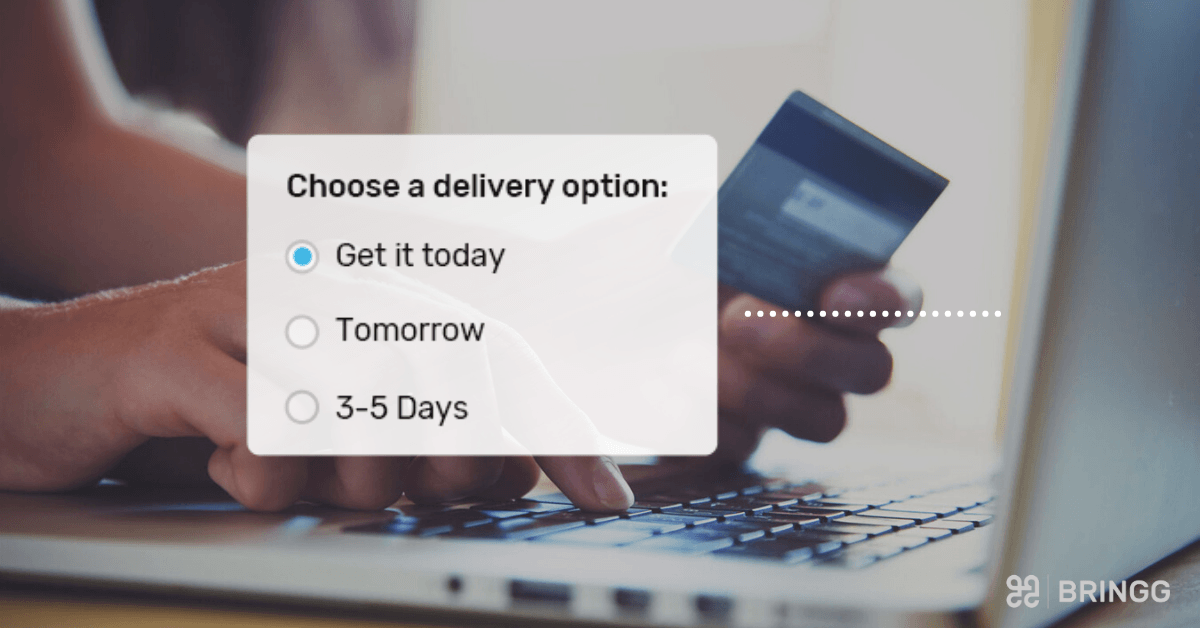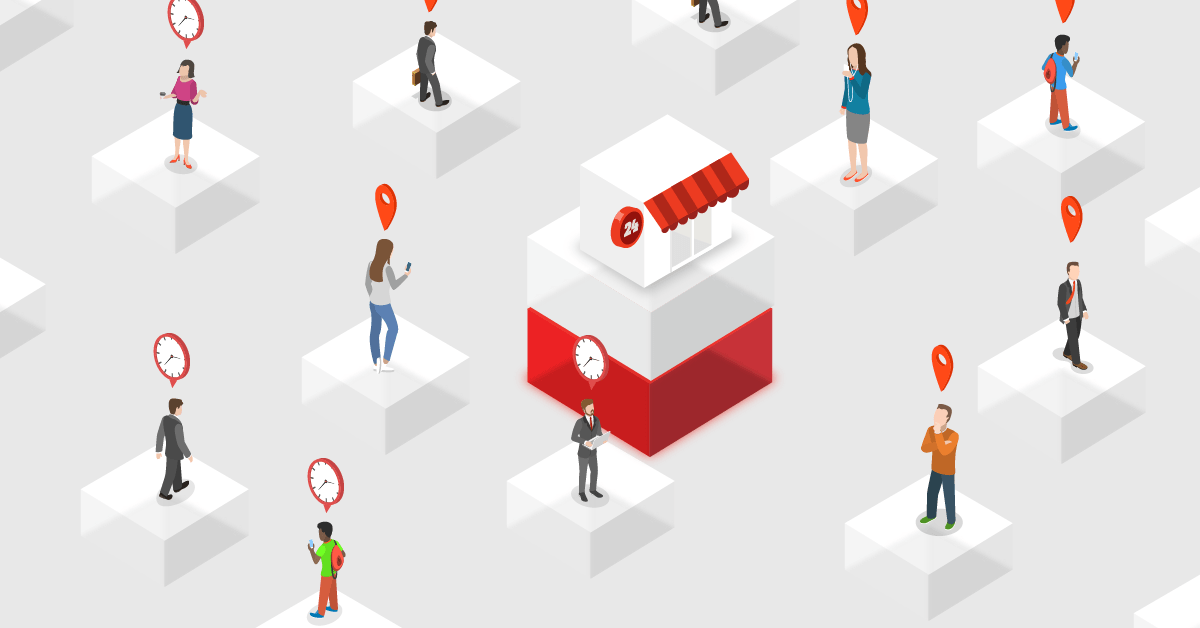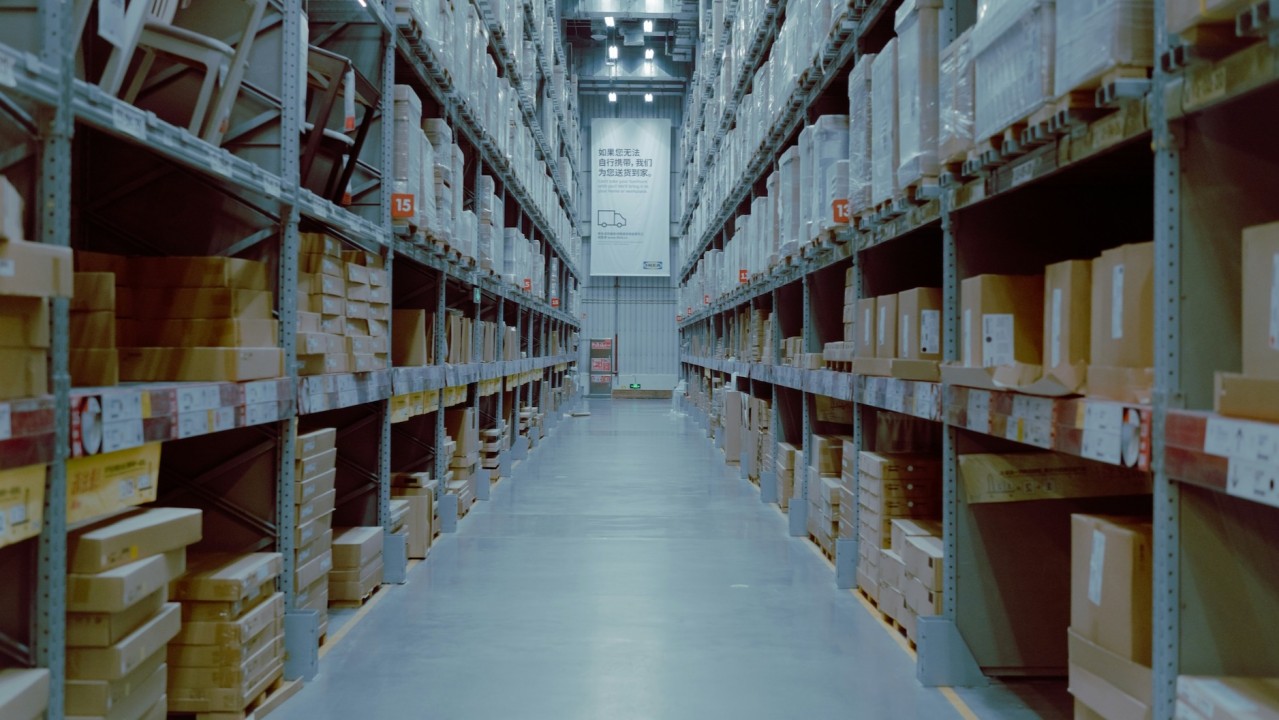Online shopping and home delivery are at an all-time high. Delivery volumes and expectations for fast fulfillment have been growing steadily for years. However, many companies don’t have the operational capacity to handle today’s rising demand. So what do you do when delivery volumes outstrip your capacity?
At Bringg, we’ve developed a number of capabilities to help our customers proactively tackle overflow demand and improve efficiency at scale.
Order batching
One way to deal with high volumes is to deliver multiple orders in a single delivery run. Restaurants and Grocery chains often have orders for delivery in the same area and in the same time window. These retailers frequently utilize order batching to reduce the number of drivers needed. Order batching is particularly helpful during peak delivery periods.
For example, if multiple employees in the same company, or neighbors on the same block order lunch between 11:30 and 12pm with a one-hour SLA, a driver can set out with all of their orders for a 12:25pm delivery time.
For grocers, customers who order home delivery within the same 2-hour window and live within a 5 mile radius, can all receive their groceries in the same delivery run, provided there is sufficient time and the vehicle has sufficient capacity.
Bringg’s batching optimization takes into consideration the parameters that matter most to each business, and runs seamlessly as part of routing and dispatch. This allows the batching feature to optimize orders that aren’t yet ready for delivery, and drivers that aren’t ready for their next run (i.e. drivers who are still on the road).
Customer ranking and order prioritization
Many B2B businesses offer premium subscription plans for top-tier customers. Sometimes, capacity and volume issues require that the business prioritize deliveries to these customers.
Bringg helps these businesses prioritize orders from some customers based on their unique ranking. For example, when there is a capacity constraint, deliveries to VIP or premium customers are always prioritized.
Automating delivery timing

When you want to deliver quickly and efficiently, one of your first priorities should be to coordinate and automate your logistics processes. Bringg’s platform automates delivery scheduling and quotes; when customers reach your checkout, they are presented with accurate delivery times based on your capacity. When demand outstrips your capacity to the point that it means longer SLAs, customers should be presented with up-to-date delivery options.
This may seem deceptively simple, but showing accurate, available delivery options requires complete visibility over all available resources – drivers, fleets, vehicle type and capacity, and inventory – as well as automated processes that calculate available delivery options in real time.
LOGISTICS REPORT: Meeting Demands for Rapid, Convenient Delivery
Automating delivery overload also allows you to set excess orders to spill over to later runs. If on Sunday, your customer orders a sofa to be delivered on Tuesday – and all of your Tuesday morning time slots are taken – then Bringg’s platform will provide the customer with the option to select afternoon delivery windows.
Dynamically Engage Outsourced Fleets with Automated Dispatch & Routing
One of the most efficient and cost-effective ways to utilize external flees is to outsource your overflow as needed. For example, many retailers, restaurants and grocers have engaged third-party delivery providers, and have their Bringg dispatch and routing configured to dynamically engage these providers when appropriate.
Cost-effective ways to optimize your MultiFleet Dispatch:
1. Outsource deliveries during peak seasons, such as the holiday season
2. Supplement or improve your internal fleets by engaging outside resources during peak hours
3. Optimize your fleet selection based on your KPIs – e.g. lowering costs by dispatching to the lowest cost fleet, or improving speed by dispatching to the fleet with the fastest SLAs
Furthermore, our ecosystem of integrated delivery partners enables our customers to flexibly scale their delivering operations using any combination of internal and external fleets, crowdsourced fleets, and more.
Machine Learning: Demand and Timing Prediction
Machine learning often increases delivery capacity by accurately estimating delivery times for every step of the flow: from prep and staging, to time en route, on site, and time back to the delivery pickup point. Machine learning allows you to accurately predict how long each stage will take, eliminating the need for time buffers, which provides you with additional delivery capacity without increasing headcount.
To take this to the next level, in order to deliver quickly, efficiently, and at scale, you need inventory close to the customer, and you want the inventory to be nearby BEFORE the customer asks for it. The advantage of MFC’s and retail locations is irrelevant if you don’t know in advance where and when the demand will be. Keep excess inventory in stock, and it will go to waste. Keep too little, and you won’t be able to fulfill orders.
What is demand prediction?
Demand prediction is a machine learning model with three components:
1. Knowing what will be needed, when – using historical data, socioeconomic data, etc.
2. Visibility into inventory location across the supply chain
3. Logistics – how you bring things from one place to another as cost effectively as possible.
Having inventory on hand near the customer cuts down on driving time, giving you more capacity for other orders.
As delivery demand grows, optimizing your capacity through predictive technology and other solutions will become critical to meeting your SLAs and offering exceptional customer experiences.



